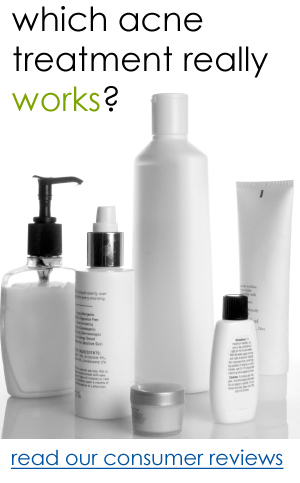Acne Symptoms
Acne usually develops on the face, back and chest. 99% of people with acne are affected on their faces, 60% on their backs and 15% on their chests.
Acne may be categorised as non-inflammatory inflammatory and can occur in many different forms, ranging from pus-filled cysts to blackheads.
Individuals struggling with inflamed acne may experience scarring and skin damage, so it merits medicating as soon as possible. Inflammation of bacteria leads to swelling, pain and redness in the infected areas.
Types of spots
Acne creates skin lesions that are typically called spots. A lesion is the technical terminology for damaged tissue.
There are six major types of lesions caused by acne. These are:
- Blackheads
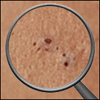
Blackheads are small black bumps on the skin. Sometimes blackheads can appear in a somewhat yellow colour. - Whiteheads
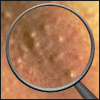
Whiteheads are similar in appearance to blackheads, but they have a white centre and are usually firmer. - Papules
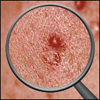
Papules are small red bumps that often feel sore or tender. - Pustules
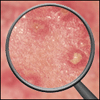
Pustules are comparable to papules, but they typically a white top in the middle that is the result of pus building up. - Nodules
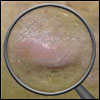
Nodules are hard, large bumps that develop beneath the skin’s surface and are often painful. - Cysts
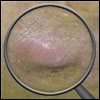
Cysts are the most dangerous form of lesions caused by acne. Cysts are large, pus-filled lumps and are similar in appearance to boils. They pose the biggest risk of leaving permanent scars.
Differentiation of Acne Spots
It is crucial to understand that even though each kind of acne spot has a unique outward appearance, all of the spots are caused by basically the same process. A combination of seborrhoea, the failing of dead skins cells to effectively be cleared from hair follicles and the process of the Propionibacterium acnes leads to the formation of a comedo inside the pilo-sebaceous unit.
Consequential inflammation in and around the comedo forms a noticeable acne spot. It is the expansion of the inflammation, the magnitude of harm it causes to neighbouring tissue and the absence or presence of infection that determines which type of spot will appear originally and how it will develop over time.
